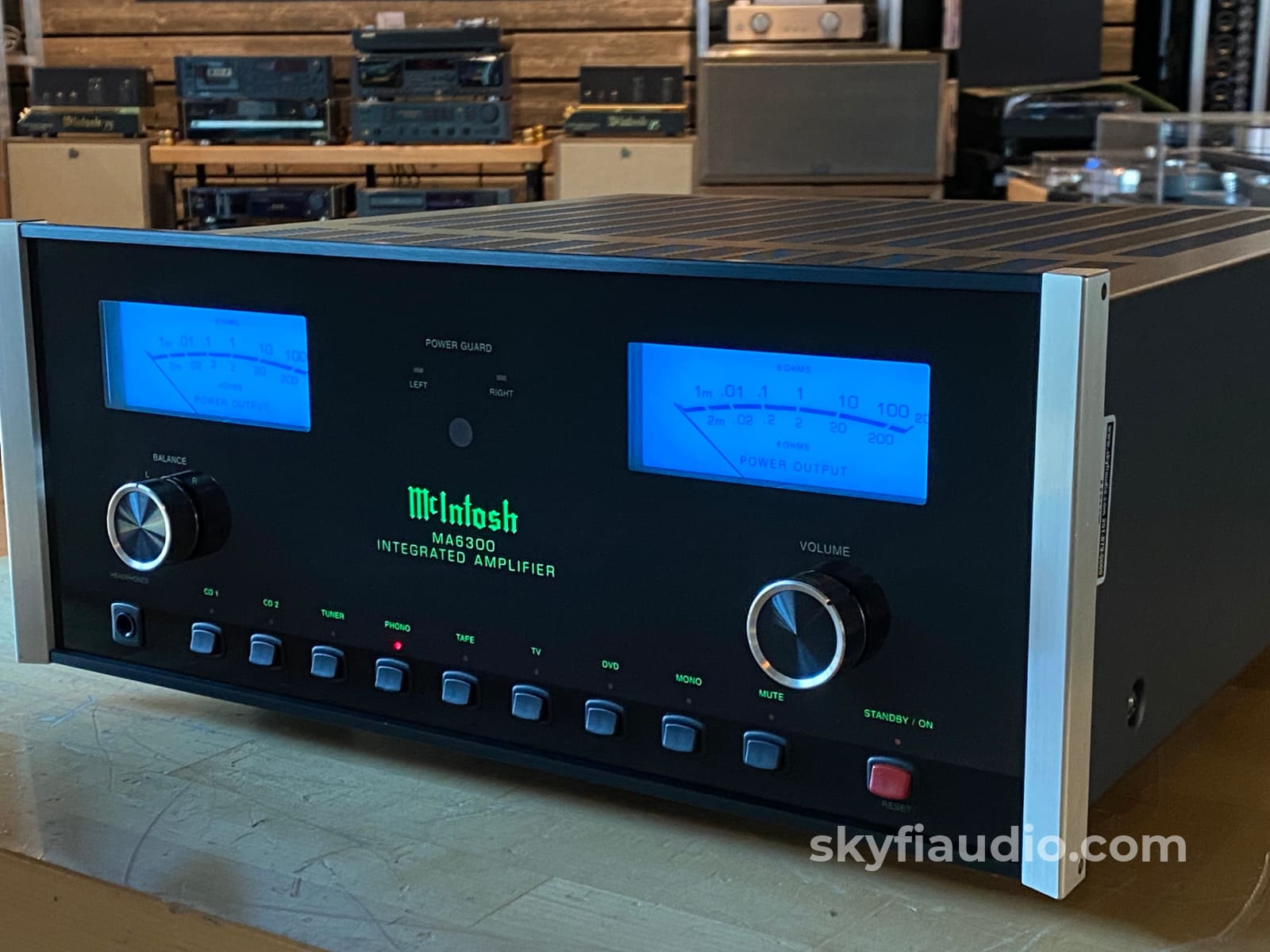
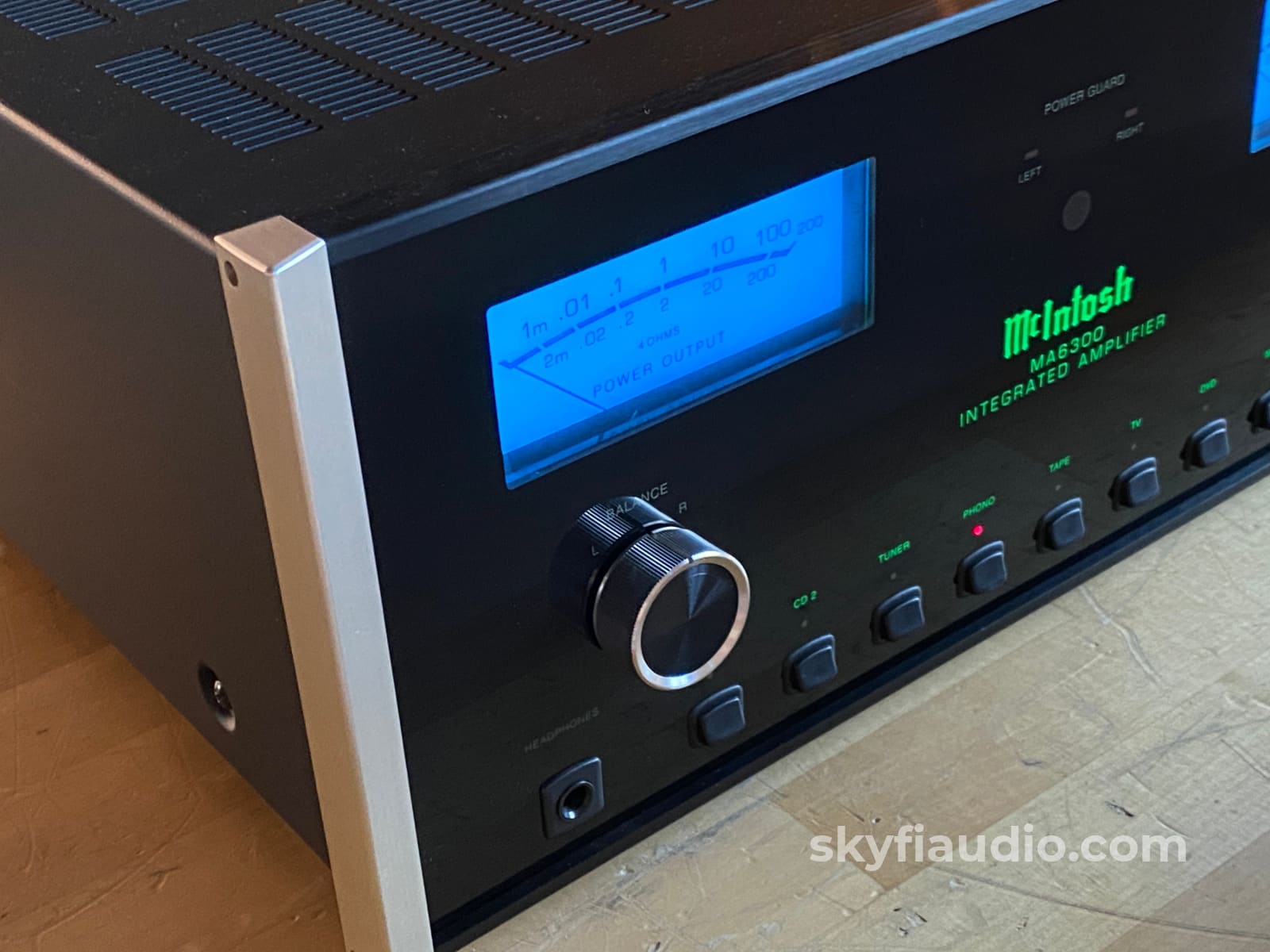
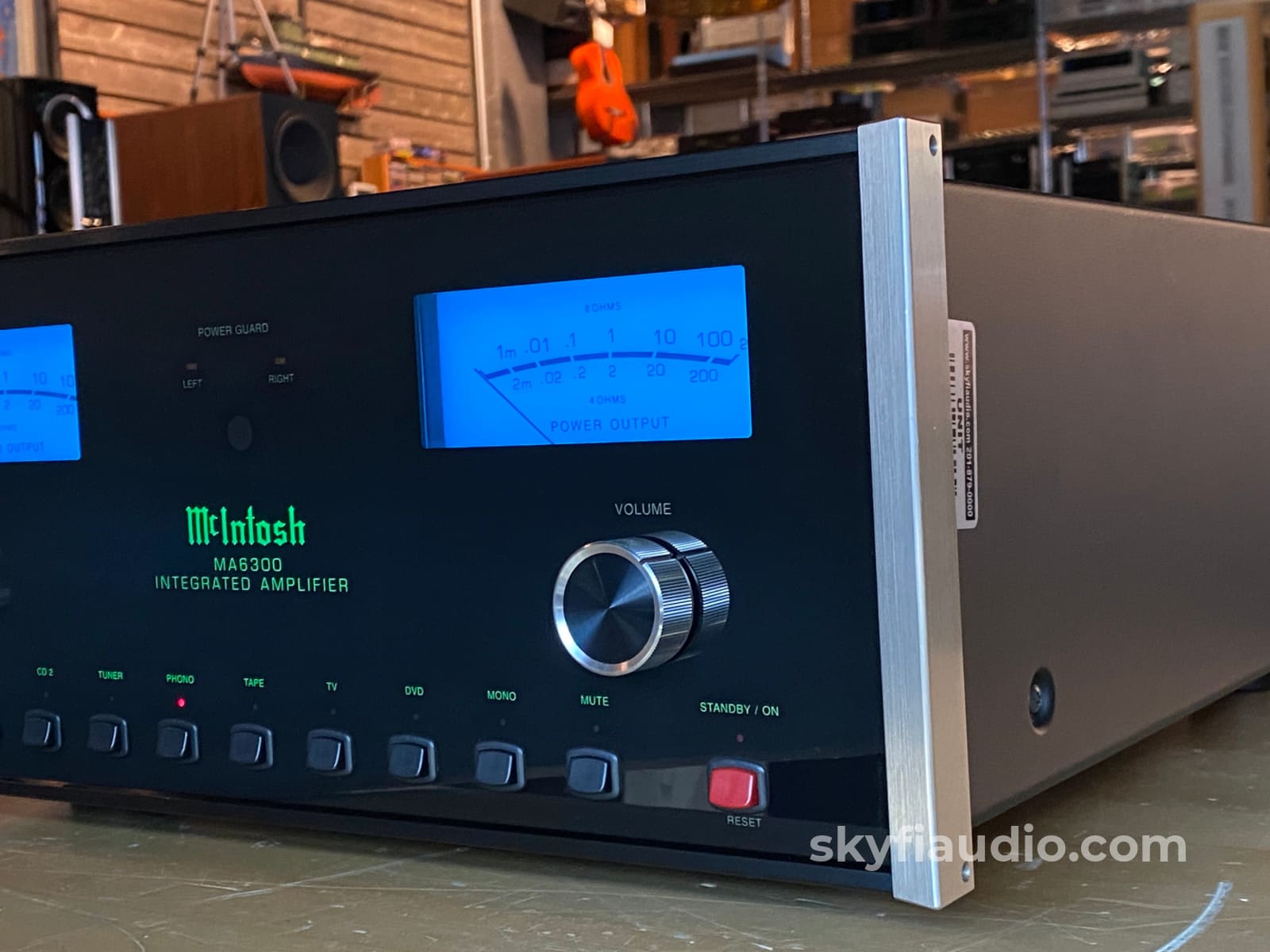
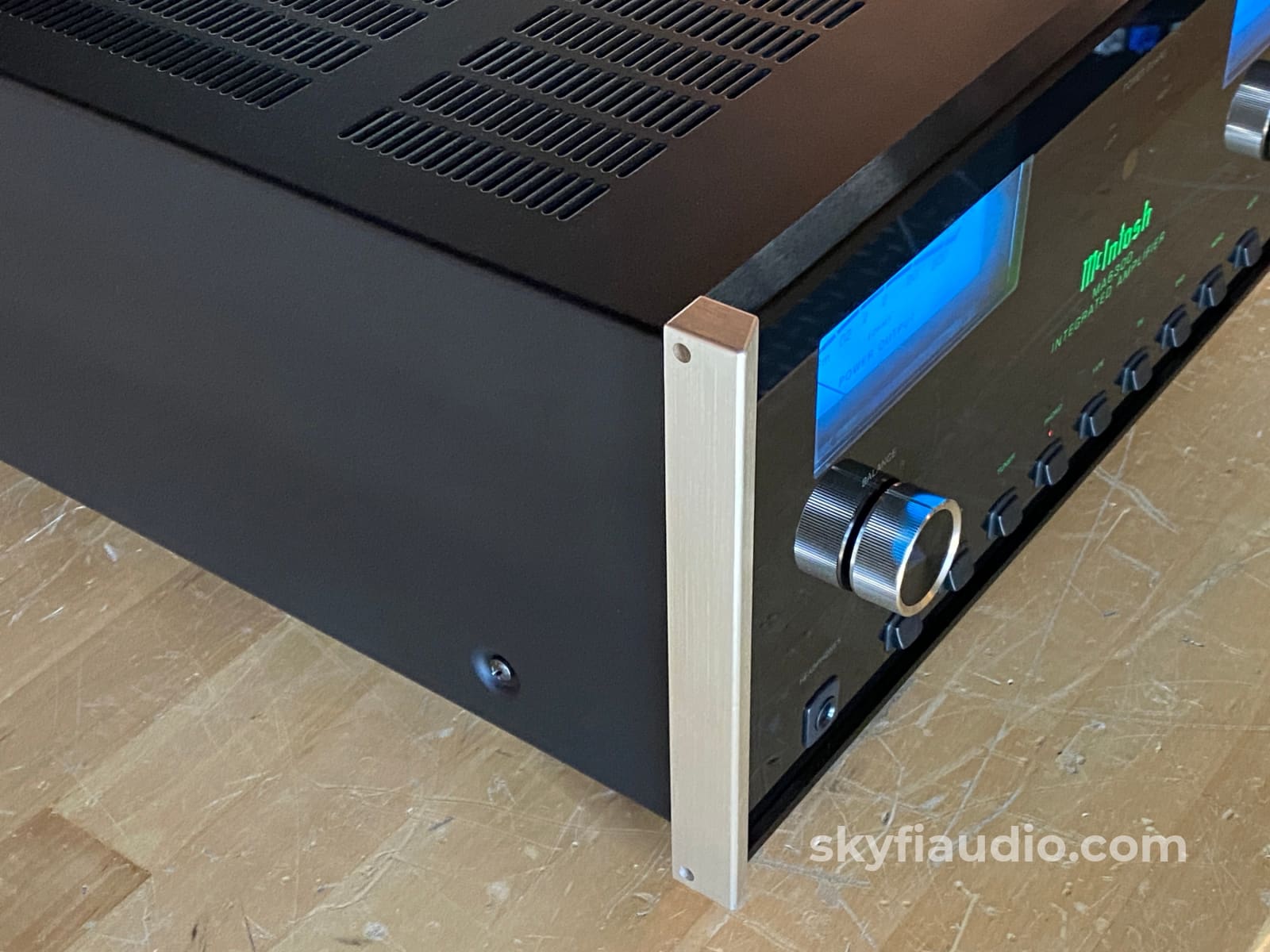
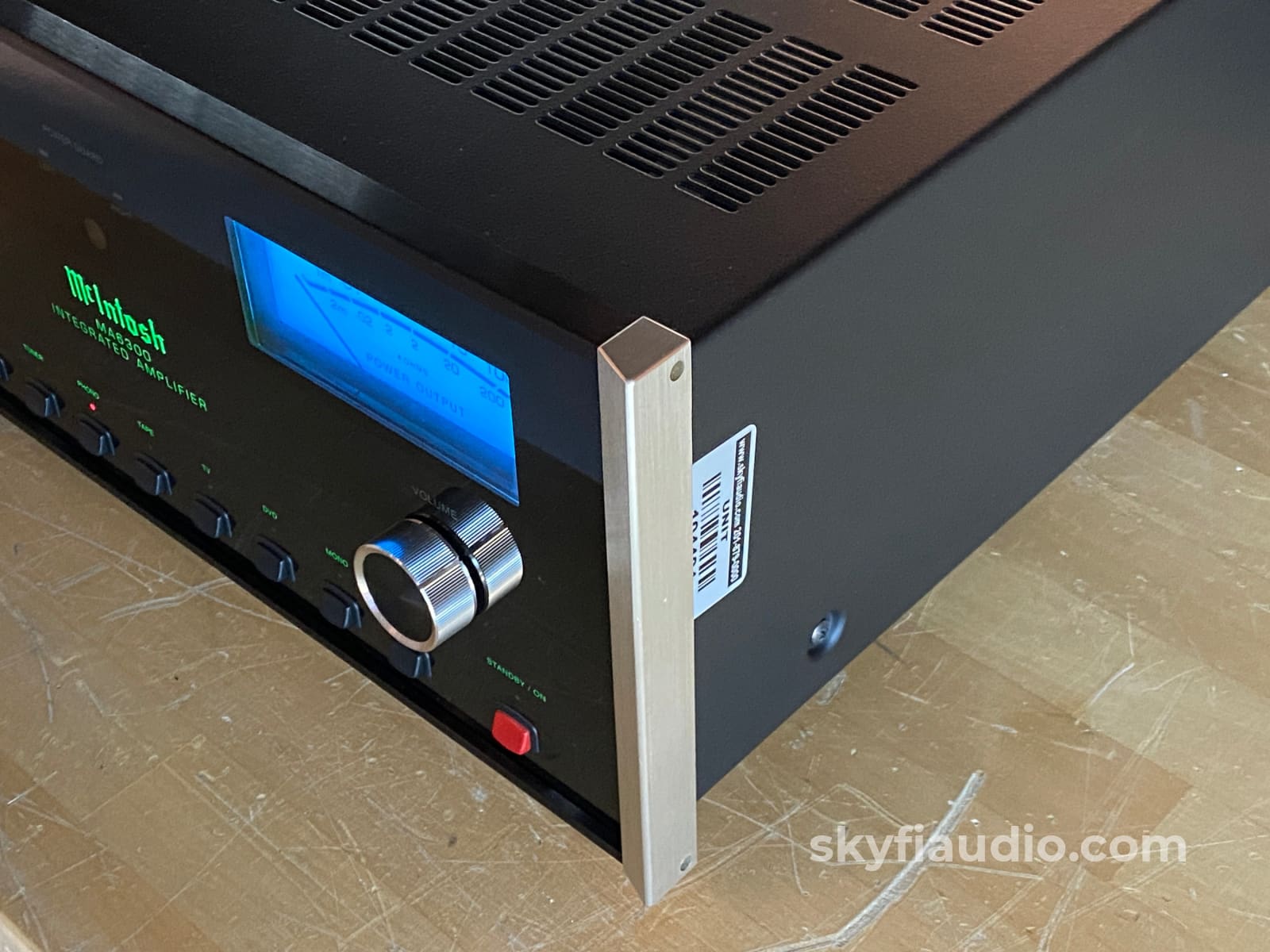
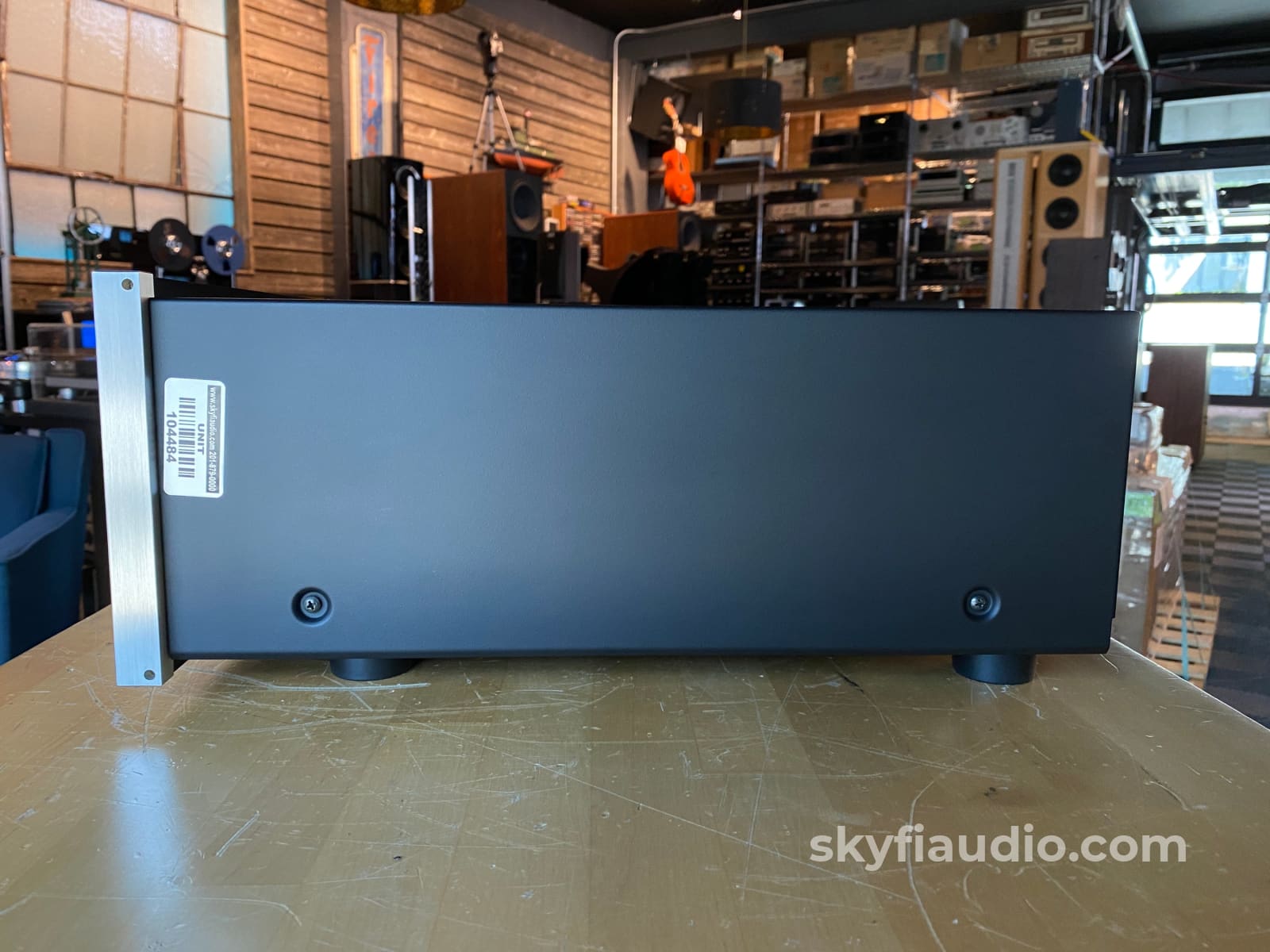
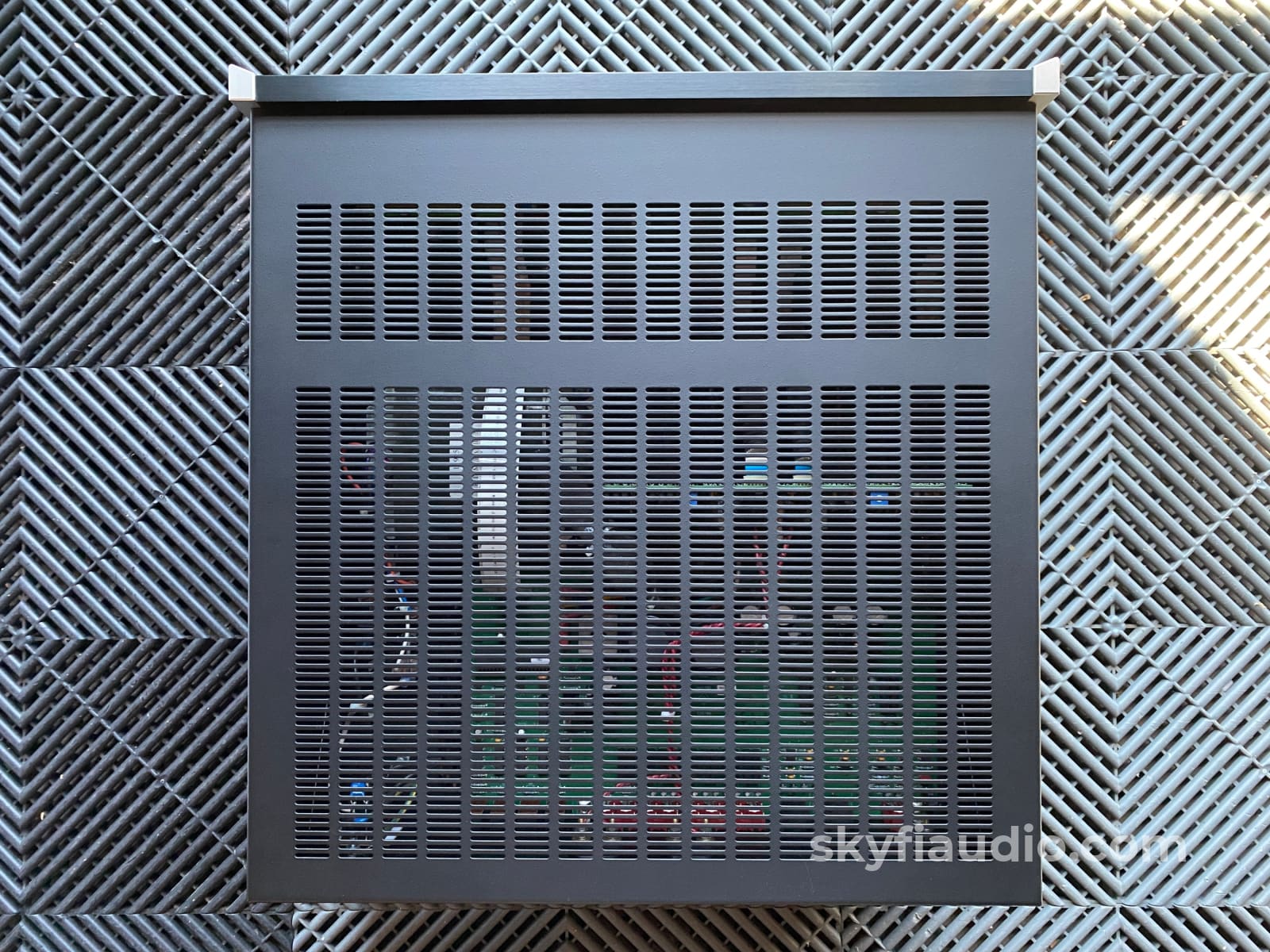
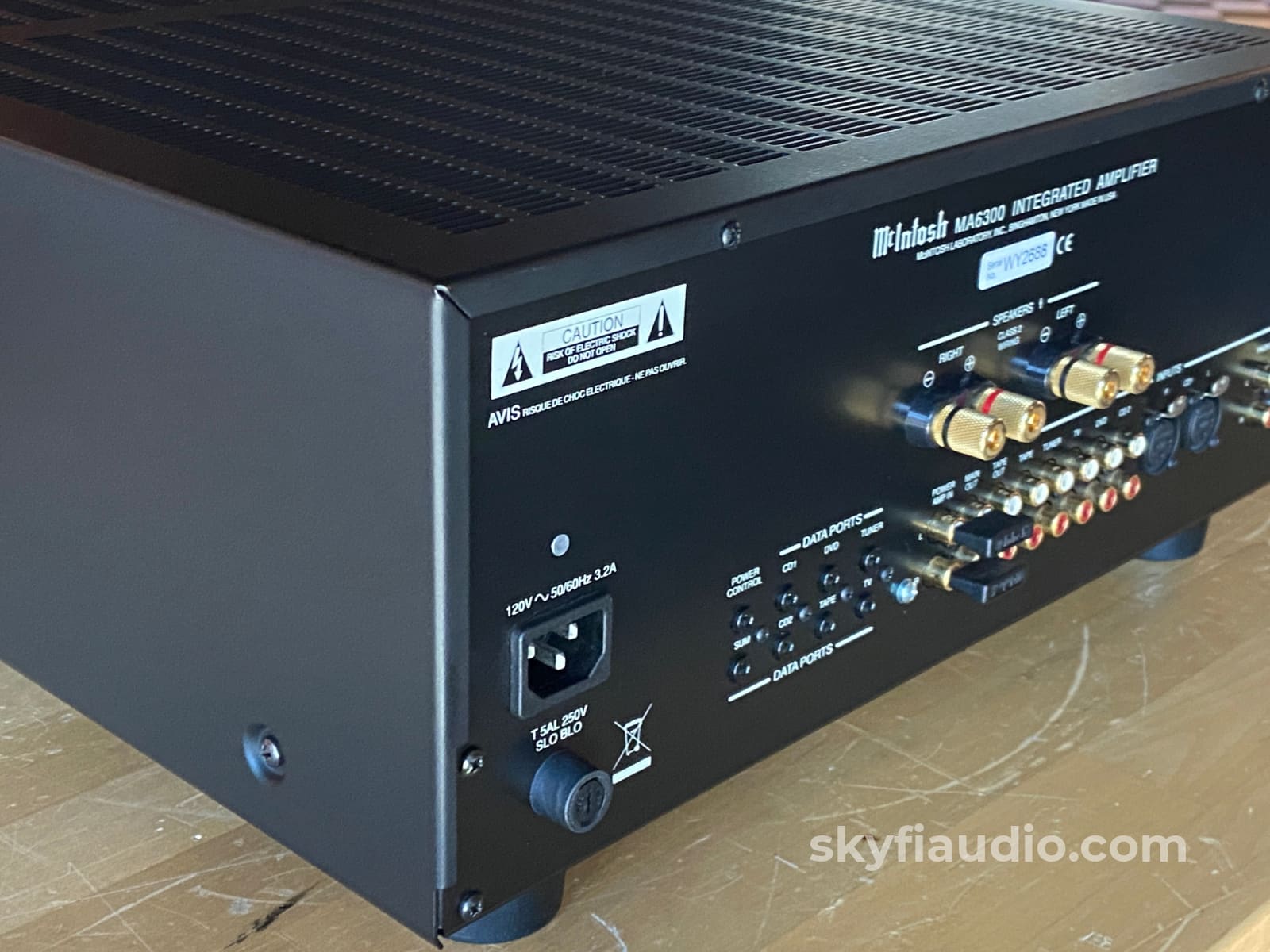
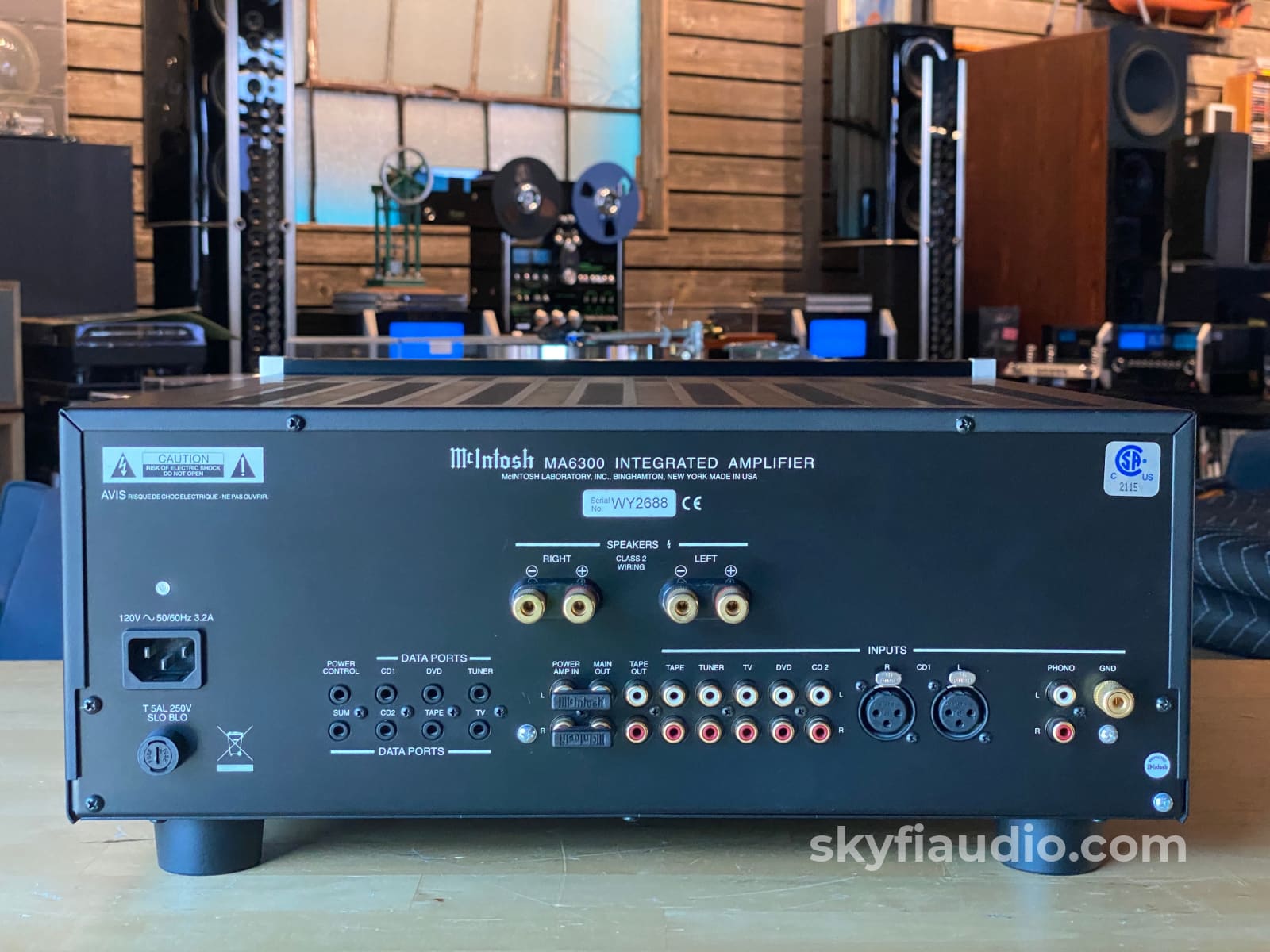
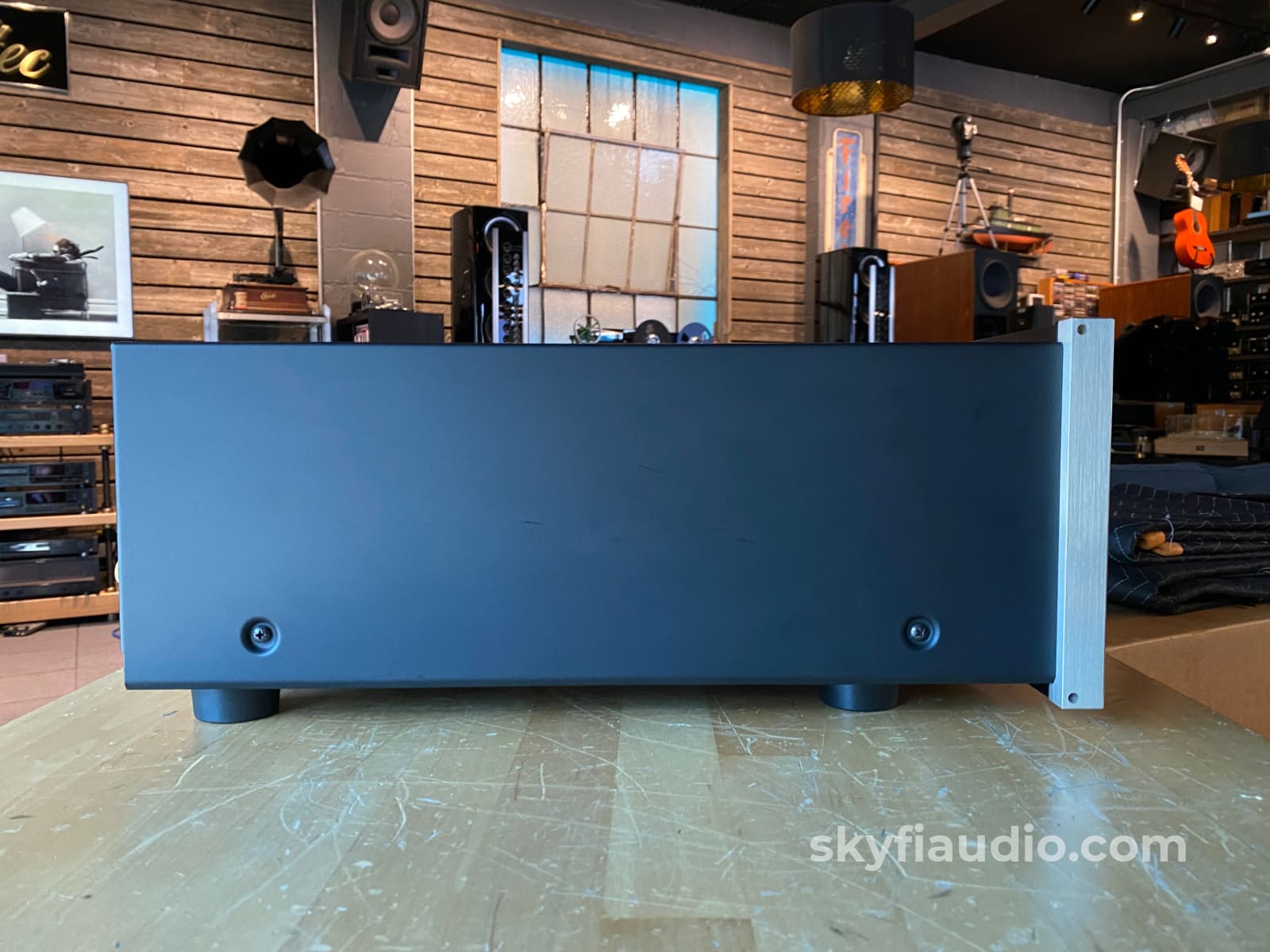
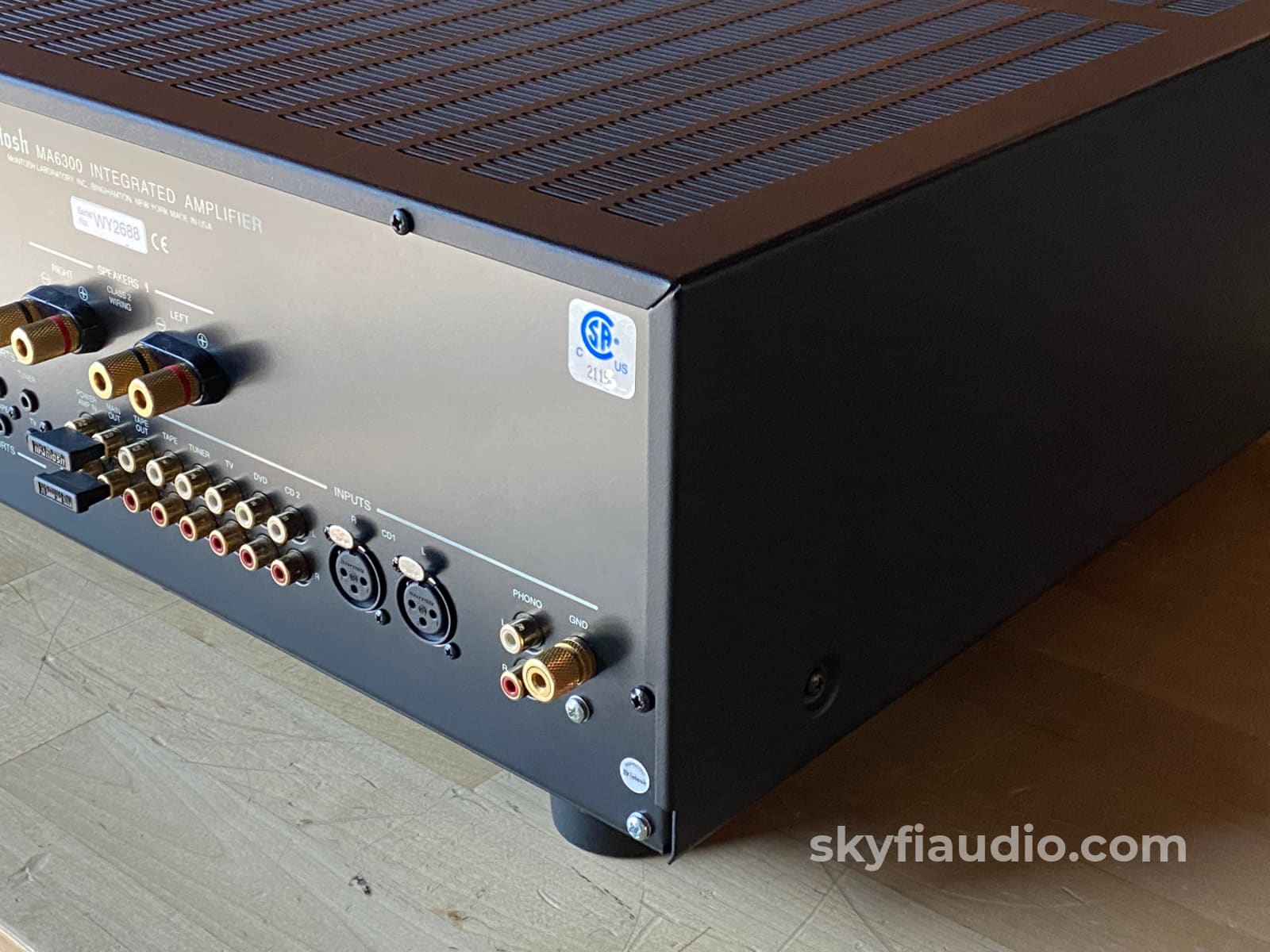
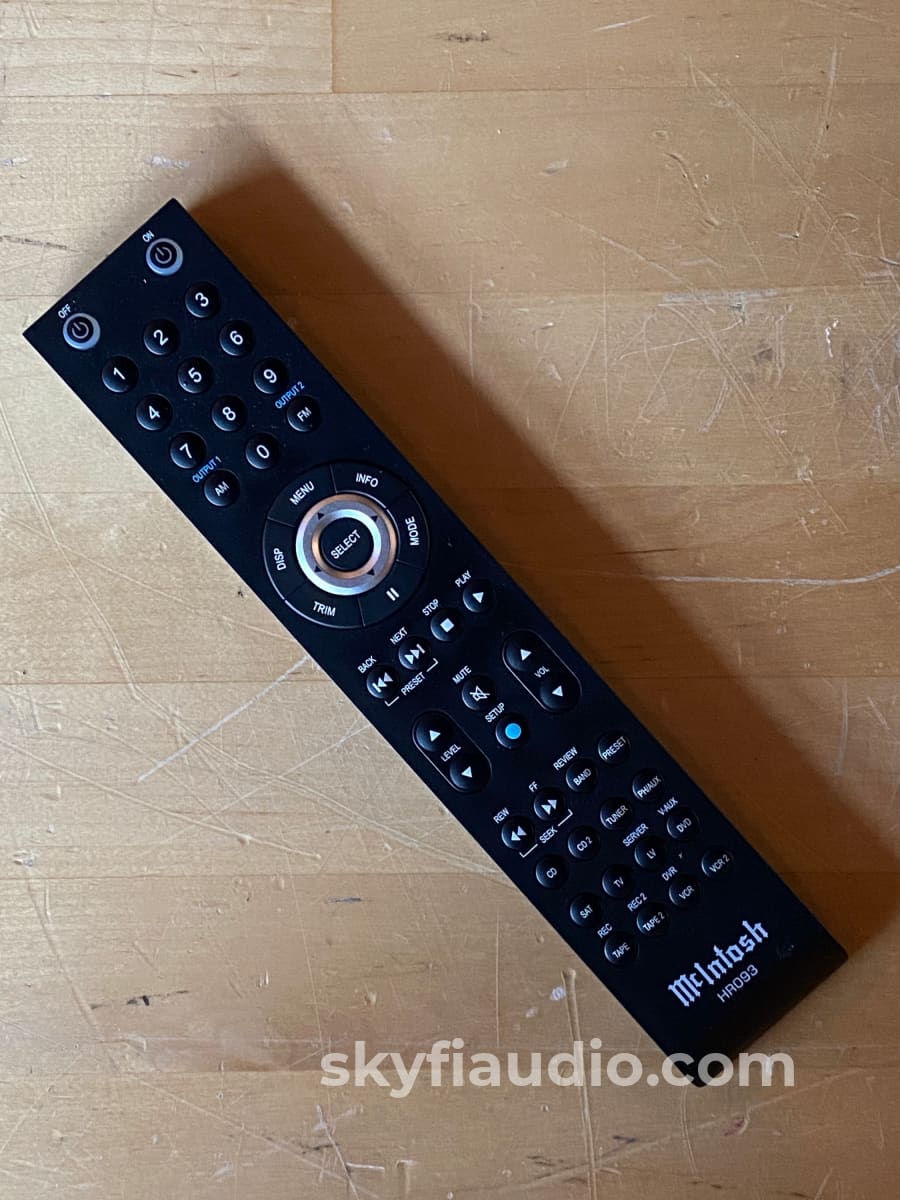
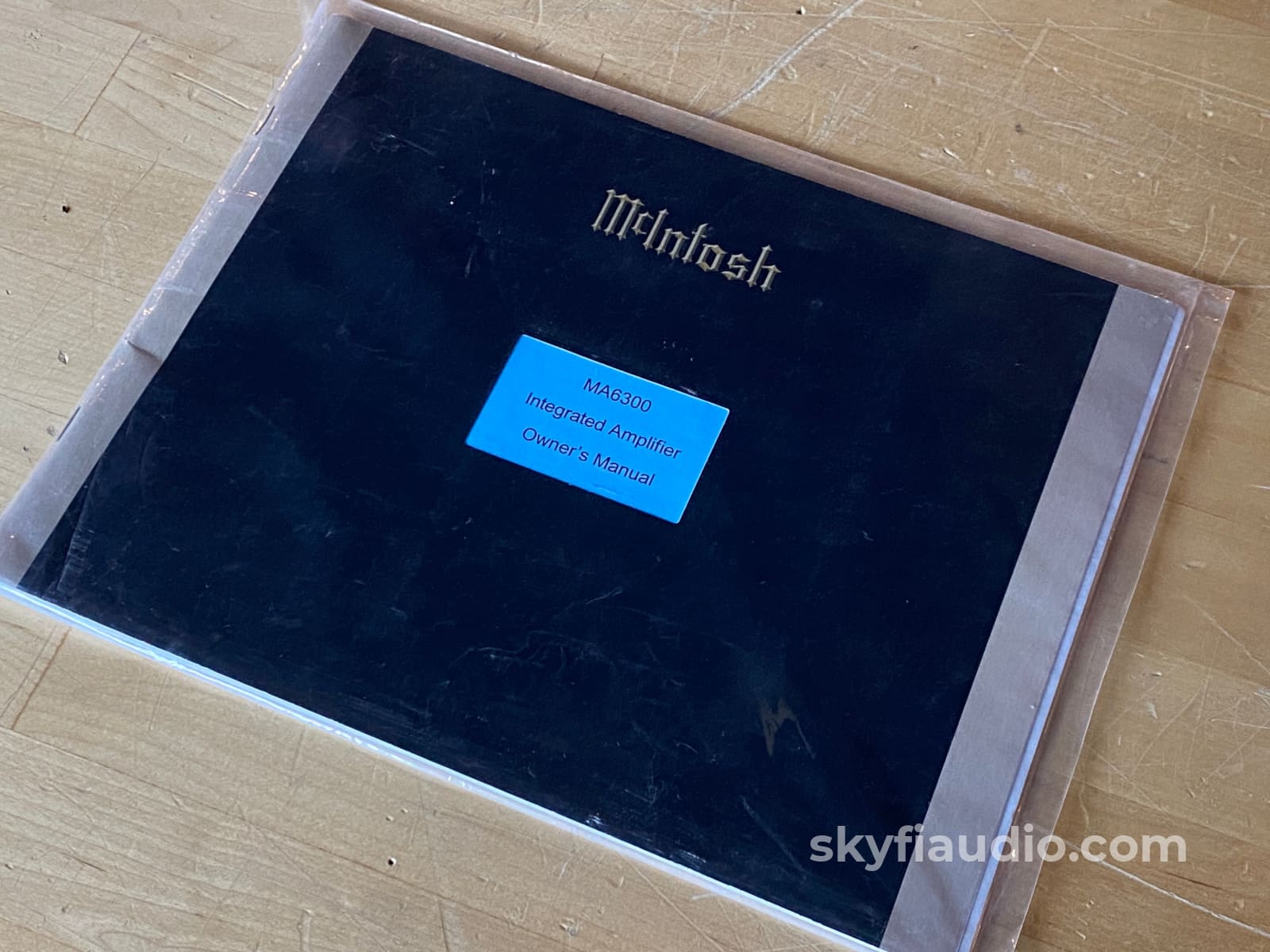
McIntosh MA6300 Integrated Amplifier - All Analog with Phono Input
Free Shipping on Most Electronics - Excludes Speakers and Items Requiring Freight - Contiguous U.S. Only
Pickup currently unavailable at SkyFi 479

McIntosh MA6300 Integrated Amplifier - All Analog with Phono Input
SkyFi 479
479 South Broad Street
Glen Rock NJ 07452
United States
General:
Integrated amps are one of the fastest selling pieces in our inventory. When the brand is McIntosh they go even faster.
This MA6300 was carefully reviewed in our shop and is performing flawlessly. It also has the benefit of not being as heavy as some other pieces from McIntosh which can be something else to move around.
Looks are great - all meters and lights work as they should, the casework has only slight signs of use, and the front faceplate glass is super clean.
Includes the original McIntosh double shipping carton (necessary for safe shipping), and a fresh new modern remote as shown in our photos.
SkyFi: Cosmetic Notes:
• Model features McIntosh Fiber Optic Lighting.
• On the remote control the MODE button = MONO.
• Sticker on back = Factory Refurbished.
More from McIntosh:
"Now you can take advantage of traditional McIntosh standards of excellence in the MA6300 Integrated Amplifier. The Power Amplifier section of the MA6300, with a power output of 100 watts per channel, will drive a pair of quality loudspeakers to a high level of performance.
The flexible Preamplifier section provides connections for various input sources and may also be used to drive an external Power Amplifier. The MA6300 reproduction is sonically transparent and absolutely accurate. .
The McIntosh Sound is “The Sound of the Music Itself.”
Some MA6300 Performance Features Include:
• Power Output
The MA6300 consists of a 100 watts per channel stereo Power Amplifier and a sophisticated Preamplifier in one compact unit with less than 0.005% distortion.
• Electronic Input Switching and Balanced Input
Digital Logic integrated circuits drive Electromagnetic switches on all seven inputs and operating functions for reliable, noiseless, distortion free switching. The Balanced Input allows the connection of a source component using long cable lengths, without a loss in sound quality.
• Power Guard
The patented McIntosh Power Guard circuit prevents the amplifier from being over driven into clipping with its harsh distorted sound that can also damage your valuable loudspeakers.
• Sentry Monitor and Thermal Protection
McIntosh Sentry Monitor power output stage protection circuits ensure the MA6300 will have a long and trouble free operating life. Built-in thermal protection circuits guard against overheating.
Brand Background:
McIntosh Laboratory is an American manufacturer of handcrafted high-end audio equipment based in Binghamton, New York. The company was founded in 1949 by Frank McIntosh. The company designs and produces audio amplifiers, stereo tuners and other consumer electronics products.
Ownership:
Single Owner
General Sound:
Neutral sound with little to no coloration
Cosmetic Condition:
8 - Very Slight Signs of Use. See our detailed rating description here.
Working Condition:
Working perfectly and tested in our lab and listening room.
Included:
Unit, power cord, remote, and manual
Packing:
Original Manufacturers Packing
Specs:
Power Output
100 watts into an 8 ohm load is the minimum sine wave continuous average power output. The output RMS voltage is 28.3V across 8 ohms
160 watts into a 4 ohm load is the minimum sine wave continuous average power output. The output RMS voltage is 25.3V across 4 ohms
Output Load Impedance
8 and 4 ohms
Rated Power Band
20Hz to 20,000Hz
Total Harmonic Distortion
0.005% maximum harmonic distortion at any power level from 250 milliwatts to rated power, 20Hz to 20,000Hz
Dynamic Headroom
1.4dB
Frequency Response
+0, -0.5dB from 20Hz to 20,000Hz
+0, -3dB from 10Hz to 100,000Hz
Preamplifier Main Output
1V for rated input (8V Maximum)
Sensitivity (for rated output)
High Level, 250mV unbalanced, 500mV balanced
Phono, 2.5mV
Power Amp In, 1V
Signal To Noise Ratio (A-Weighted)
High Level, 97dB below rated output
Phono, 90dB below 10mV input
Power Amplifier, 110 below rated output
Intermodulation Distortion
0.005% maximum, if the instantaneous peak power output is rated power or less per channel with both channels operating for any combination of frequencies from 20Hz to 20,000Hz.
Wide Band Damping Factor
200 at 8 ohms
100 at 4 ohms
Input Impedance
High Level, 20K ohms
Phono, 47K ohms; 65pF
Power Amp In, 10K ohms
Maximum Input Signal
High Level, 8V
Phono, 90mV
Power Amplifier In, 8V
Main Output Impedance
50 ohms
Power Guard
Less than 2% THD with up to 16dB overdrive at 1,000Hz
Voltage Gain
High Level to Tape Output: 0dB
High Level to Main Output: 12dB
Phono to Main Output: 52dB
Power Requirements
120 Volts, 50/60Hz at 3.2 amps
Dimensions:
Width is 17-1/2 inches (44.45cm)
Height is 7-5/8 inches (19.37cm) including feet
Depth is 22 inches (55.88cm) including the Front Panel, Knobs and Cables
Weight:
37 lbs.
Recommended Cables:
McIntosh Balanced Audio Cables (XLR)
Kimber Kable - Phono Interconnects - Better
Kimber Kable - Flagship Phono Interconnects - Best
Kimber Kable - Ascent 10 Gauge Power Cord - Better
Kimber Kable - Palladian 10 Gauge Power Cord - Best
Testing Process:
The SkyFi Testing Process for Preamplifiers:
We start with a visual inspection of all internal components to make sure that there are no signs of heat stress or damage. Capacitors are checked for telltale signs of predictive failure including bulging, shrunken wrappers, or physical leakage. We also inspect the PCB’s for discoloration from resistors or transistors that may have been running hot. On vintage units we often spot check select capacitors for value and ESR.
When we first power on a preamplifier we connect its RCA output to a Sencore PA81 Power Analyzer which simulates real world loading conditions and gives us an oscilloscope interface. The first order of business is checking that the volume control works smoothly throughout its entire range with acceptable channel balance. This is accomplished by feeding a 1KHz sine wave into one of the preamp’s line level inputs while monitoring the preamp’s output on an oscilloscope.
We then switch to a 1KHz square wave to test the tone controls, loudness function, and filters where applicable. During this step we are watching for equal alteration of the test signal by both channels. This also helps us identify dirty controls that will need treatment. Once the basic line stage functions are verified, we test each input individually. This is especially important for devices that use relays to select their sources. If the preamp is equipped with a phono stage we test that as well. We use an inverse RIAA filter which allows us to feed a reference test signal into the phono input with the proper RIAA equalization and level. A square wave or sine sweep is used to verify that the device’s phono stage is faithfully reproducing the RIAA curve. If the preamp under test has balanced inputs and/or outputs these are tested as well.
We finish up our bench testing with a listening test with our bench amplifier and reference speakers. During this test we check for hum or hiss that may not have shown up in earlier testing. We also check that all of the tone controls and filters perform as expected. If the preamplifier has remote control functions these are also tested. Preamps with tube circuits or complicated power supply topologies are connected at our long term test rig for extended stress testing under real world conditions.
The SkyFi Testing Process for Solid State Amplifiers:
We start with a visual inspection of all internal components to make sure that there are no signs of heat stress or damage. Capacitors are checked for telltale signs of predictive failure including bulging, shrunken wrappers, or physical leakage. We also inspect the PCBs for discoloration from resistors or transistors that may have been running hot. On vintage units we often spot check select capacitors for value and ESR.
If the amplifier passes visual inspection, we move on to a controlled power on sequence using a Sencore safety analyzer to monitor current draw in real time. Once the amplifier is determined to be safe to operate, we connect it to full AC mains for function and power testing. We connect the speaker outputs of the amplifier to a Sencore PA81 Power Analyzer which acts as a dummy load, DC offset monitor, and oscilloscope interface. We start with a low level 1KHz test signal at the amplifier’s input and slowly increase its amplitude while monitoring the output on an oscilloscope for signs of noise, clipping, distortion, or improper channel balance. We continue increasing the signal level until the amplifier reaches clipping. At this point we take an output power measurement and compare it to the spec sheet of the amplifier to verify proper performance. If the device under test has both balanced and single ended inputs they are both tested at this time. We finish off the bench evaluation with a 1KHz square wave check and a 20Hz to 20KHz sine sweep to assess the amplifier’s frequency response characteristics. This battery of tests will usually reveal if the amplifier has any issues that need further attention.
Before the device leaves the bench, we perform a listening test with actual music using a variety of preferred test tracks. Our benches are outfitted with familiar monitor speakers which help us identify inconsistencies that will not always show up on our test gear. The main things that we are listening for are hum or noise with no signal present, proper center image, clicks, pops, or any other obvious undesirable audio characteristics.
If the unit passes all of these tests it is moved to our long term testing rig where we simulate real word operating conditions for 6-8 hours. This allows us to monitor the unit for signs of thermal runaway or intermittent issues that only crop up when the unit has fully come up to temperature.
Choose options
